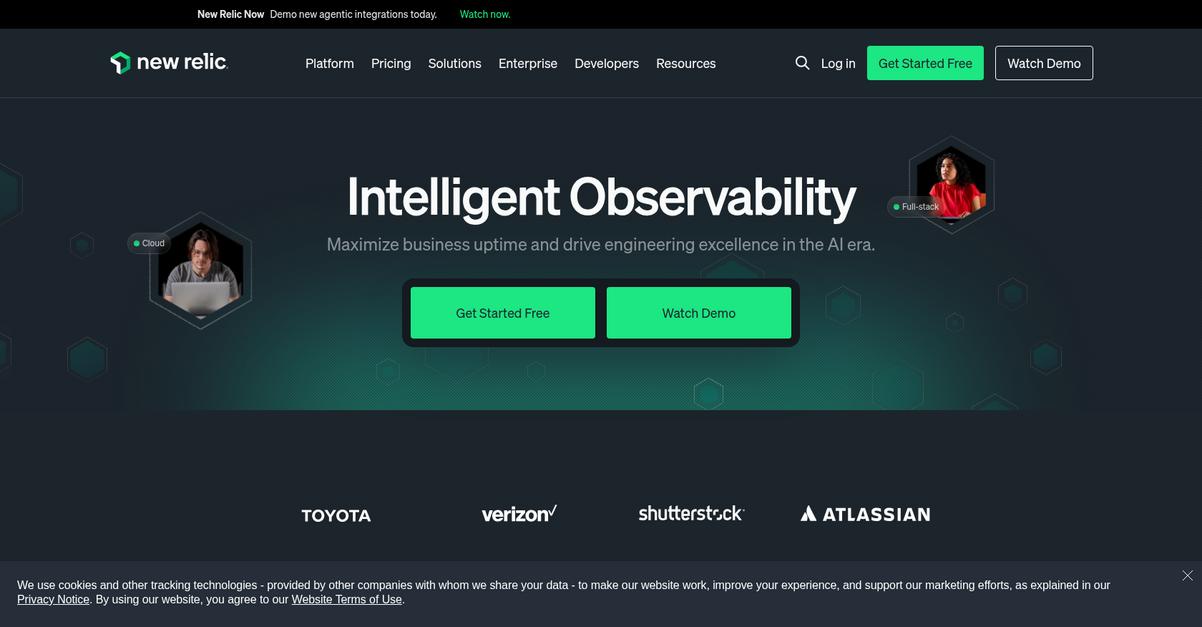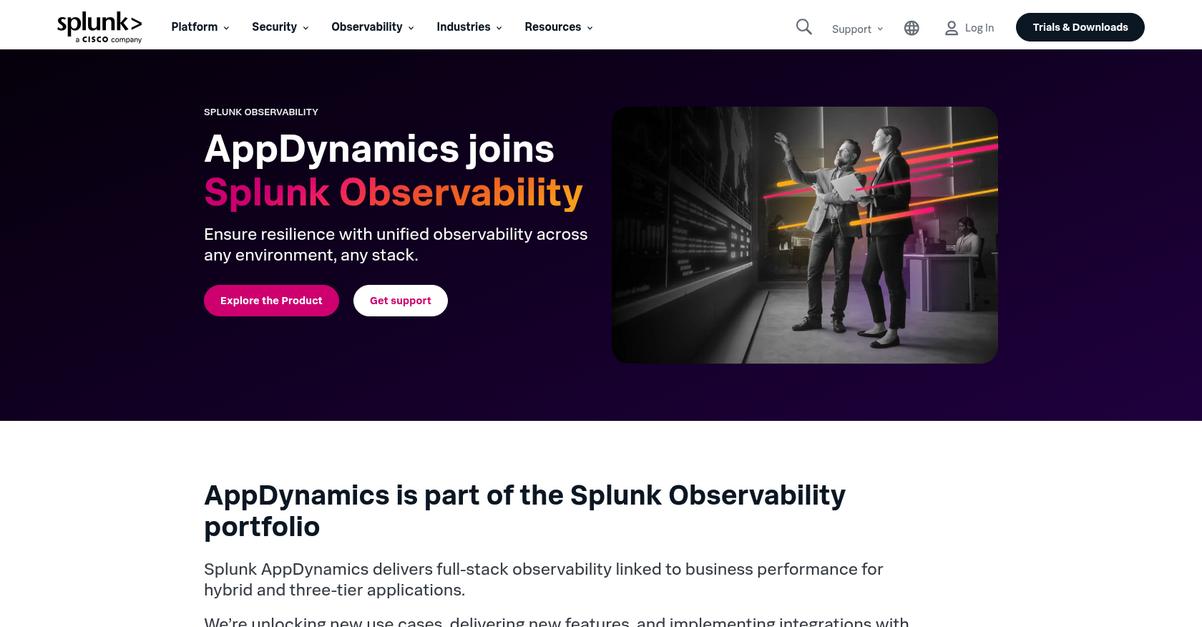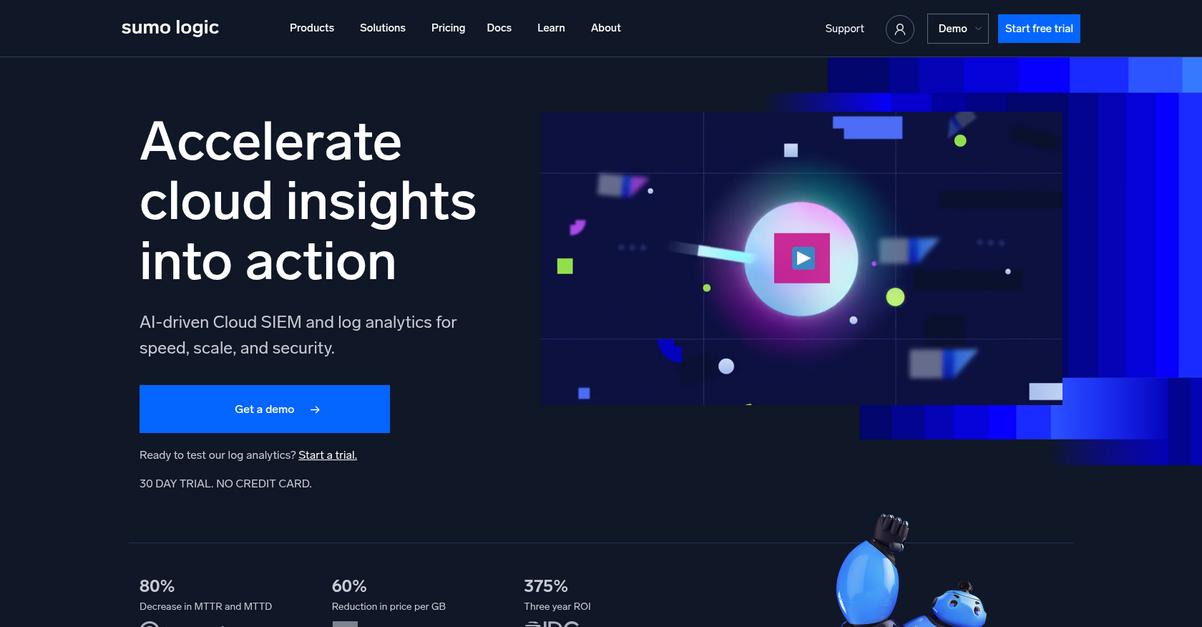Are system outages costing you dearly?
When your team struggles to find the root cause of an issue, every minute of downtime piles on pressure and financial loss.
It’s frustrating when you have monitoring data but no clear path to a solution. This complexity directly impacts your mean time to resolve.
Research from Splunk highlights that every hour of downtime costs nearly 66% of organizations over $150,000. This underscores the need for proactive issue detection.
The right platform can change this, helping you cut through the noise and pinpoint issues before they escalate into costly problems.
If you’re also focused on boosting business ROI, you might find my guide on best marketing analytics tools helpful.
In this guide, I’ll walk you through the best observability tools designed to simplify your monitoring and slash your mean time to resolution (MTTR).
You’ll discover solutions that provide unified visibility, enabling your team to respond to incidents with greater speed and precision.
Let’s dive in.
Quick Summary:
| # | Software | Rating | Best For |
|---|---|---|---|
| 1 | Datadog → | IT directors & DevOps leads | |
| 2 | New Relic → | Growing SaaS & enterprise | |
| 3 | Dynatrace → | Multi-cloud enterprises | |
| 4 | Grafana Labs → | Complex multi-cloud teams | |
| 5 | Splunk → | IT directors & DevOps leads |
1. Datadog

Struggling with complex observability tools and performance issues?
Datadog provides an integrated platform for monitoring and security, offering end-to-end visibility into your stack’s health. This means you can simplify monitoring across hybrid environments, including comprehensive infrastructure, application, and log management. You can gain simplified visibility into your stack’s performance without vendor lock-in.
How can you simplify your monitoring?
Datadog centralizes your metrics, traces, and logs, giving you a unified view of your entire system. This means you can proactively detect issues and perform root-cause analysis more efficiently. The platform includes application performance monitoring, container monitoring, and serverless observability, all designed to ensure real-time insights. Additionally, it offers comprehensive network monitoring and cloud cost management capabilities.
The platform also features AI-driven anomaly detection and proactive synthetic monitoring, which helps you optimize front-end performance and enhance user experiences. Plus, its security monitoring capabilities help detect and respond to threats in real-time, integrating seamlessly with your existing CI/CD pipelines. The result is a reduced Mean Time To Resolve (MTTR) and consistent incident response.
Manage your complex systems with confidence.
Before diving deeper, you might find my analysis of best SaaS billing software helpful to understand how to handle complex pricing for your solutions.
Key features:
- Unified Observability: Integrates infrastructure, application, and log monitoring, providing a single pane of glass for comprehensive visibility across your stack.
- Real-time Security: Offers capabilities like Cloud SIEM, Code Security, and Application and API Protection to detect and respond to threats in real-time.
- Digital Experience Monitoring: Includes Real User Monitoring, Synthetic Monitoring, and Session Replay to optimize front-end performance and enhance user journeys.
Learn more about Datadog features, pricing, & alternatives →
Verdict: Datadog stands out as one of the best observability tools due to its integrated platform, offering unified metrics, logs, and tracing across diverse environments. Its AI-powered features, like Watchdog for anomaly detection, simplify complex monitoring, making it ideal for IT directors and DevOps leads aiming to cut their MTTR and gain proactive insights.
2. New Relic

Struggling with complex monitoring across your hybrid environments?
New Relic offers over 50 capabilities within one platform, providing comprehensive observability. This means you can finally gain full-stack visibility, from front end to back end, infrastructure, and logs.
This complete view helps you pinpoint issues rapidly and resolve them up to 5x faster, significantly reducing your mean time to resolve (MTTR).
Here’s how New Relic simplifies monitoring.
You can monitor your full stack, including cloud, web, and security, all from a single location. This approach helps consolidate tools and eliminate blind spots.
Additionally, key capabilities like Transaction 360 and New Relic AI help you focus on critical data and optimize performance, ensuring proactive issue detection. Its broad integration ecosystem, including agentic AI and 780+ integrations, allows seamless connection with your existing CI/CD pipelines and diverse technologies. This means you can build up engineers and tear down silos, promoting data-driven decision-making across your teams.
Achieve unified visibility and engineering excellence.
Key features:
- Full-stack observability: Gain complete visibility across front end, back end, infrastructure, and logs, helping you identify and resolve issues much faster.
- Intelligent transaction observability: Focus on the most important data and stack elements, allowing you to resolve issues up to 5x faster with smart insights.
- Comprehensive integrations: Connect seamlessly with over 780 tools and technologies, including agentic AI, to fit into your existing workflows and reduce tool sprawl.
Learn more about New Relic features, pricing, & alternatives →
Verdict: New Relic stands out with its unified platform providing over 50 capabilities, enabling teams to resolve issues up to 5x faster. Its transparent, usage-based pricing and extensive integrations make it one of the best observability tools for reducing MTTR and driving engineering efficiency in any growing SaaS or enterprise environment.
3. Dynatrace

Tired of observability complexity holding you back?
Dynatrace offers AI-powered observability to transform that complexity into your greatest asset. This means you can understand your systems and data with a unified platform.
Building on this, Dynatrace provides end-to-end infrastructure observability for modern multi-cloud environments, along with APM, distributed tracing, and profiling for cloud-native stacks. You can accelerate growth and drive innovation.
Here’s how to simplify monitoring.
Dynatrace provides a unified observability and security platform, leveraging groundbreaking AI to automate, analyze, and innovate faster. This helps you get real-time visibility.
Its capabilities include log analytics for intelligent data insights and digital experience monitoring, so you can deliver flawless digital experiences with real-user and synthetic monitoring. You also get robust application security, discovering and shielding from vulnerabilities in real-time.
Additionally, Dynatrace offers advanced threat protection with automated response and forensics for unmatched protection, alongside software delivery insights to drive intelligent cloud ecosystem automations. You can even use business analytics to make better business decisions in real-time with customizable insights, ensuring alignment between infrastructure performance and business KPIs.
The result: proactive issue detection.
Key features:
- Unified Platform: Consolidates infrastructure observability, application performance monitoring (APM), and security into a single, AI-powered platform for complete visibility across multi-cloud environments.
- AI-Powered Automation: Leverages groundbreaking AI to automate analysis, detect anomalies, and provide root-cause analysis, significantly reducing mean time to resolve (MTTR) issues.
- Comprehensive Monitoring: Covers digital experience, log analytics, application security, and threat observability, ensuring proactive issue detection and protecting your entire software stack.
Learn more about Dynatrace features, pricing, & alternatives →
Verdict: Dynatrace offers a unified, AI-powered platform that transforms complexity into an asset, making it one of the best observability tools. Its comprehensive capabilities, from infrastructure and application observability to advanced security and business analytics, help you simplify monitoring and cut your MTTR, ensuring you innovate faster with fewer issues.
4. Grafana Labs

Struggling to gain real-time visibility across your infrastructure?
Grafana Labs provides a unified platform that centralizes metrics, logs, traces, and profiles, simplifying complex monitoring needs. This means you can finally conquer the challenge of tool sprawl.
Here’s how: the platform’s comprehensive capabilities facilitate unified metrics, logs, and tracing across multi-cloud deployments, enabling proactive issue detection and root-cause analysis, which is crucial for reducing your MTTR.
Is disparate monitoring holding you back?
Grafana Labs solves this by allowing you to instantly connect all your data sources, from AWS to Splunk, into a single pane of glass. This provides unified metrics, logs, traces, and profiles, giving you a complete overview.
Additionally, AI/ML insights are integrated to automatically identify anomalies and reduce manual toil, freeing up your team. Plus, you can easily create and manage service level objectives (SLOs) and error budget alerts, ensuring your services meet performance targets.
The platform also supports synthetic monitoring and performance testing with Grafana k6, allowing you to proactively check your APIs and web applications from a user’s perspective. This ensures you catch issues before they impact customers.
The result: improved incident response and a clearer picture of system health.
Before diving deeper, you might find my analysis of best freelance platform helpful for optimizing your workforce.
Key features:
- Unified Observability Stack: Consolidate your metrics, logs, traces, and profiles into a single platform, eliminating tool sprawl and simplifying monitoring across diverse environments.
- AI/ML Insights & Alerting: Utilize AI/ML capabilities for automated anomaly detection and root cause analysis, reducing manual effort and speeding up incident resolution.
- Comprehensive Data Source Connectivity: Connect to hundreds of data sources, including AWS, Splunk, and Datadog, ensuring you can visualize and monitor virtually any data without migration.
Learn more about Grafana Labs features, pricing, & alternatives →
Verdict: Grafana Labs delivers a powerful, unified observability solution that centralizes metrics, logs, and traces from diverse sources. Its AI/ML insights and comprehensive alerting features directly address the need for proactive issue detection and reduced MTTR, making it one of the best observability tools for managing complex, multi-cloud environments effectively.
5. Splunk

Struggling with complex monitoring and slow incident response?
Splunk offers a unified platform for full-stack observability, empowering you to detect, diagnose, and resolve performance issues quickly.
This means you can gain complete visibility across your digital ecosystem, streamlining IT operations to keep your apps and business running smoothly.
So, how can you fix problems faster?
Splunk helps you optimize cloud monitoring and improve end-user experiences, giving you the insights you need to maintain business continuity.
You can proactively prevent major issues by optimizing mission-critical services and reducing alert noise by unifying workflows for ITOps and engineering teams. This platform even helps you debug problems in microservices and isolate cloud-native issues, using AI Assistants to quickly find and fix vulnerabilities, enhancing analyst productivity for faster issue detection.
It’s about securing reliability while boosting productivity.
If you’re also exploring other specialized software solutions, my article on best event rental software provides detailed reviews and insights.
Key features:
- Full-stack Observability: Provides comprehensive visibility to detect, diagnose, and resolve performance issues across your applications and IT environment.
- AI-Powered Solutions: Uses agentic AI and AI Assistants to accelerate detection, investigation, and response, allowing you to troubleshoot with natural language.
- Unified Data Platform: Integrates security and observability data for real-time insights and advanced analytics, removing silos and controlling costs.
Learn more about Splunk features, pricing, & alternatives →
Verdict: Splunk helps IT directors and DevOps leads overcome observability challenges by offering a unified, AI-powered platform for full-stack visibility, making it one of the best observability tools for reducing MTTR and improving incident response.
6. Elastic

Struggling with fragmented monitoring and slow issue resolution?
Elastic unifies your app and infrastructure visibility, offering real-time insights to simplify monitoring. This means you can proactively resolve issues, cutting down your mean time to resolve (MTTR) significantly.
Their advanced ML and analytics accelerate problem resolution, making it easier to understand and address performance bottlenecks across your systems. You can finally gain comprehensive oversight.
Here’s how to gain clear visibility.
Elastic helps accelerate problem resolution with its open, flexible, and unified observability platform. It brings together log monitoring, application performance monitoring (APM), and infrastructure monitoring into a single view.
This allows you to unify visibility across your applications and infrastructure, which is crucial for identifying root causes quickly. You also get features like OpenTelemetry support, synthetic monitoring, and real user monitoring for a complete picture. Plus, Universal Profiling and AIOps capabilities enhance your ability to detect anomalies and automate responses, driving down MTTR and improving incident response.
The result is proactive issue detection.
While focusing on improving system performance, also consider how virtual PBX systems can streamline communication and support your hybrid teams.
Key features:
- Unified Visibility: Consolidate log monitoring, APM, and infrastructure monitoring for a complete view of your entire environment, enabling proactive issue resolution.
- Advanced Analytics: Leverage machine learning and AIOps to accelerate problem resolution, detect anomalies, and streamline incident response workflows effectively.
- Comprehensive Monitoring: Gain insights from OpenTelemetry, synthetic monitoring, real user monitoring, and Universal Profiling for unparalleled depth in performance analysis.
Learn more about Elastic features, pricing, & alternatives →
Verdict: Elastic stands out as one of the best observability tools by providing a unified, AI-driven platform for comprehensive monitoring. With capabilities like 10X faster insights at half the price, it helps your team accelerate problem resolution and gain real-time visibility across your entire tech stack.
7. AppDynamics

Struggling with complex observability across your hybrid environment?
AppDynamics helps you gain crucial visibility to detect, diagnose, and resolve performance issues quickly.
This means you can keep your applications and business running smoothly, reducing the time spent troubleshooting and improving your overall incident response.
Here’s how AppDynamics helps.
AppDynamics, now part of Splunk, gives you full-stack observability specifically linked to business performance for hybrid and three-tier applications. This allows you to optimize cloud monitoring and improve end-user experiences, giving you unparalleled visibility.
It also helps you debug problems in microservices, ensuring your ITOps, Engineering, Network, and Security teams see across traditional and modern applications, all domains, and even owned and unowned networks. Additionally, with artificial intelligence powering the platform, you can accelerate troubleshooting and resolution across teams, streamlining workflows and getting more value from your observability investments by proactively detecting issues.
The result is better control of your data and costs.
Key features:
- Full-stack observability: Gain unified visibility across any environment and stack, from on-prem to public cloud, covering traditional and cloud-native applications for comprehensive monitoring.
- Business performance linkage: Connect application performance directly to business metrics, including networks, ISPs, APIs, and services your applications depend on, and link application security to business risk.
- AI-powered insights: Leverage artificial intelligence to accelerate troubleshooting and resolution, reduce alert noise, and analyze security infrastructure and application data to identify critical trends.
Learn more about AppDynamics features, pricing, & alternatives →
Verdict: AppDynamics delivers exceptional full-stack observability for hybrid and three-tier applications, prioritizing a streamlined, AI-powered experience. Its ability to optimize cloud monitoring, reduce alert noise, and improve end-user experiences makes it one of the best observability tools for reducing MTTR and ensuring business resilience.
8. Honeycomb

Struggling with complex observability tools and hidden costs?
Honeycomb offers an all-in-one observability platform, unifying your data for limitless possibilities, helping you cut down on tool sprawl and adoption failures.
This means you can send any structured data, like logs, metrics, and traces, to their platform without worrying about additional volume costs.
You want unified data and predictable pricing.
Honeycomb is designed to handle modern software’s vast telemetry, allowing you to append all the technical and business context you need without extra charges. This helps you get the right answers now.
Their lightning-fast query engine quickly analyzes data, providing dynamic, explorable visualizations that encourage deep investigation. Additionally, Honeycomb is fully OpenTelemetry-compatible, empowering your curiosity without hidden costs. You can share queries and investigations with your team through shareable links, enabling effortless knowledge transfer and fostering better cross-team collaboration for incident reduction and predictable costs.
The result is clarity and control.
While we’re discussing system health, understanding endpoint detection and response is equally important for comprehensive security.
Key features:
- All-in-one unified platform: Consolidates logs, metrics, and traces into a single platform, eliminating tool sprawl and providing comprehensive insights across your entire system.
- OpenTelemetry compatibility & unlimited dimensionality: Seamlessly ingest OpenTelemetry data and add infinite fields and context to your data, empowering deep exploration without extra costs.
- Fast query engine with predictable pricing: Experience unbelievably fast query results on cloud-scale data, coupled with predictable, event-based pricing that avoids hidden costs and sampling.
Learn more about Honeycomb features, pricing, & alternatives →
Verdict: Honeycomb provides a powerful solution for IT directors and DevOps leads seeking the best observability tools, offering unified data, lightning-fast queries, and predictable pricing based on event volume. Its OpenTelemetry compatibility and focus on unlimited dimensionality allow teams to solve issues proactively and achieve significant MTTR reductions, as evidenced by customer success stories.
9. Instana

Tired of complex observability tools?
Instana uses AI and automation to proactively solve issues across your application stack. This means you can eliminate DevOps chores and minimize costly incidents.
You’ll reduce repetitive tasks, giving your team more time for innovation and critical work.
Here’s how you can streamline operations.
Instana simplifies monitoring by capturing full application and infrastructure context, helping you troubleshoot faster. You access high-fidelity full-stack data in real-time, updated every second, so you can identify, trace, and fix issues before they impact users. Additionally, it offers cloud-native optimization with continuous automated discovery, identifying issues quicker for application performance. Plus, generative AI proactively monitors and addresses performance issues, helping fill skill gaps. The result is improved user experience across all devices and journeys.
While we’re discussing identifying and resolving issues, understanding how electronic discovery software works can also provide clarity.
Key features:
- AI-driven automation: Proactively solves issues across your entire application stack, cutting down on repetitive tasks and freeing your team for innovation.
- Full-stack real-time visibility: Provides high-fidelity data updated every second, allowing you to identify, trace, and fix issues before they impact users across 300+ platforms.
- Intelligent incident investigation: Accelerates incident resolution up to 80% with AI-powered probable-cause analysis and ready-to-use dashboards for immediate debugging.
Learn more about Instana features, pricing, & alternatives →
Verdict: Instana’s AI and automation capabilities, demonstrated by a 30% MTTR improvement for Tata Play Broadband and Sixt’s 70% decrease in problem detection, make it one of the best observability tools. Its real-time, full-stack visibility and intelligent incident investigation capabilities directly address your team’s challenges in maintaining performance.
10. Sumo Logic

Struggling with complex monitoring and incident response?
Sumo Logic offers an AI-driven platform for log analytics and Cloud SIEM, designed to accelerate your cloud insights into action.
This means you can monitor, troubleshoot, automate, and defend your systems more effectively, saving precious time.
Here’s how to simplify your operations.
Sumo Logic helps you speed up incident investigations by automatically triaging alerts and correlating threats through powerful log analytics. You can proactively analyze and resolve issues from both cloud and on-premises systems before they impact your applications.
Additionally, their AI-powered Mo Copilot, an AI assistant purpose-built for DevSecOps, helps you identify, investigate, and resolve issues faster and with greater accuracy. This ensures you can meet compliance demands and strengthen your cloud infrastructure. Plus, their Flex Licensing means you pay only for data used, avoiding budget waste while ingesting everything you need.
The result? Reduced mean time to resolution (MTTR).
Key features:
- AI-powered Analytics: Utilizes proprietary algorithms and machine learning, including a Mo Copilot AI assistant, to help identify and resolve issues faster and with more accuracy.
- Comprehensive Log Management: Collects log data from diverse cloud and on-premises environments for proactive analysis, incident investigation, and full visibility into your infrastructure.
- Flexible and Scalable Pricing: Offers Flex Licensing that lets you pay only for the data consumed, allowing infinite scalability and cost efficiency for ingesting all necessary information.
Learn more about Sumo Logic features, pricing, & alternatives →
Verdict: Sumo Logic offers a robust, AI-driven platform tailored for IT directors and DevOps leads aiming to simplify monitoring and cut MTTR. Its comprehensive log analytics, Cloud SIEM capabilities, and flexible pricing make it one of the best observability tools for managing complex hybrid environments and ensuring compliance while reducing costs.
Conclusion
Downtime is more than just an inconvenience.
Choosing the right platform is tough. The wrong one just adds more noise, making it harder to find and fix the real issues impacting your customers.
The pressure to reduce downtime is immense. Failing to act quickly costs not just significant revenue, but also customer trust and valuable engineering time. This is where the right tool becomes a game-changer.
Here is what I recommend.
After reviewing all the options, Datadog is my top pick. It provides the unified visibility needed to cut through complexity and simplify your team’s monitoring.
What I love is its integrated platform that centralizes everything. When you use one of the best observability tools like Datadog, your team can proactively fix issues, not just react.
For additional insights, my analysis of Best Crypto Margin Trading Exchanges provides valuable perspectives on other investment avenues.
I suggest you start a free trial of Datadog and see how it transforms your team’s incident response workflow.
You’ll slash your resolution time significantly.






